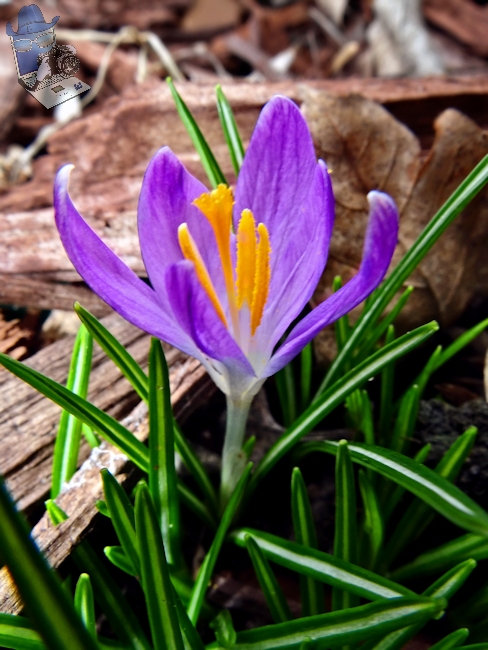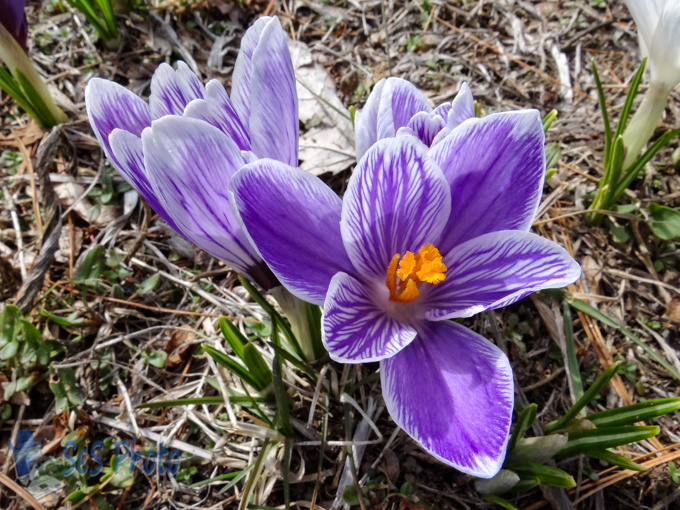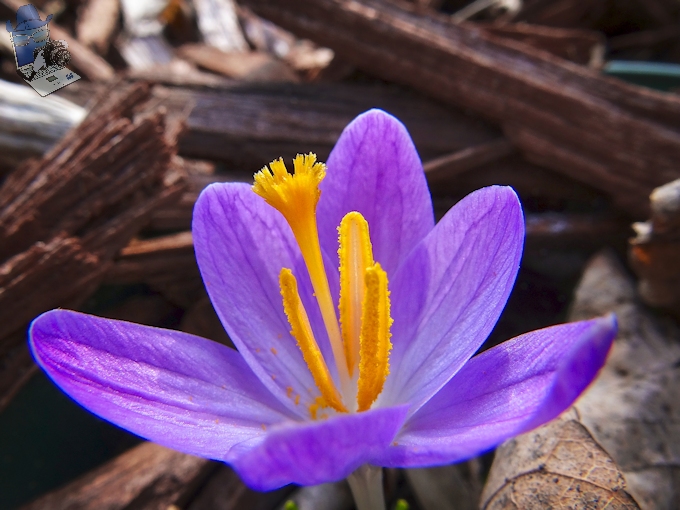Looking out at the flower bed this morning, the purple asters have turned mostly brown after several nights in the low teens. So the purple I’m thinking of as part of this week’s ‘the hunt for spring’ theme, is the tiny crocus which can often appear through the snow in the spring. According to legend the Greek Gods Zeus & Hura loved each other so passionately that the land where they lived burst open with crocuses.
The crocus was not native to North America, but instead came on ships by settlers who planted them around their cabins. But while not native here, the crocus has been cultivated since at least 1550 BC in the Mediterranean area. The lavender-flowered, fall-blooming crocus (C. sativus) has been grown for saffron the flower produces which was used as a spice, a dye, a medicine, and also in perfumes.
Saffron has always been expensive, even during its use in the Minoan culture, where the same weights used to measure gold were used for saffron. The reason for the expense is the labor-intensive nature of the production process of crushing the dried stigmas of the flower for the powder. During the brief blooming, the stigmas of C. sativus are painstakingly separated from the petals and stamens and then dried, a procedure best carried out on the day of the collection. Each crocus has three stigmas, and it takes about 160,000 flowers to produce 11 lbs of wet stigmas, which converts to 2 lbs of dried spice.
I might have to start growing the fall crocus instead of the spring crocuses since that 2 lbs of dried spice is approximately worth $10,000. Course growing 160,000 flowers to get that two pounds might be difficult with my chipmunks digging up my flower bed all the time!
Colorful Crocus







